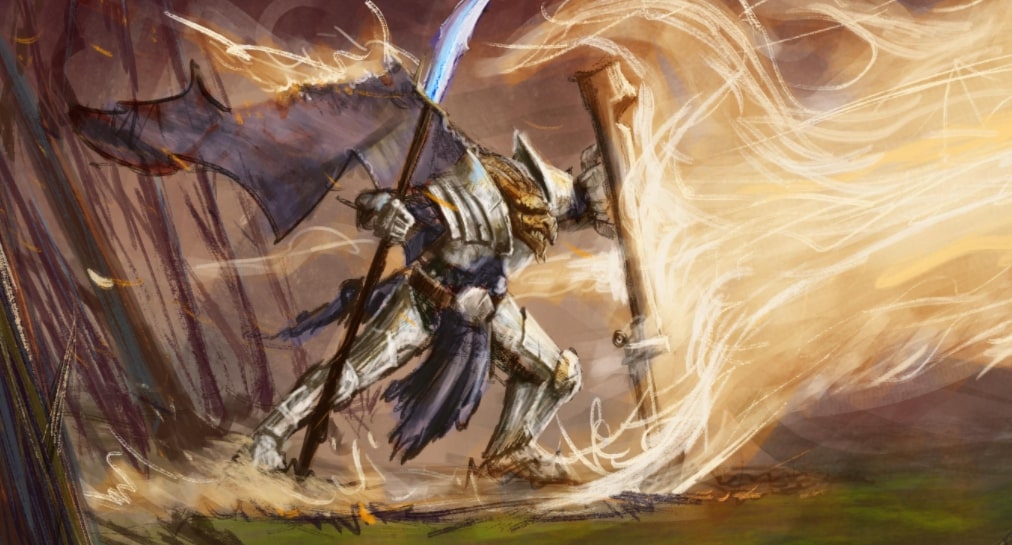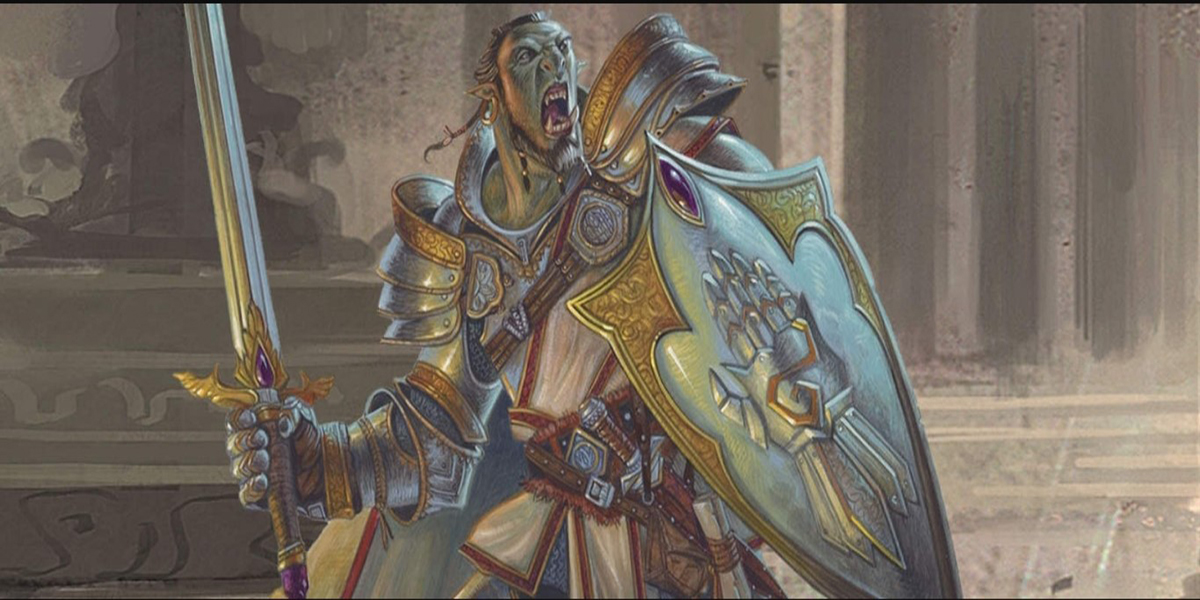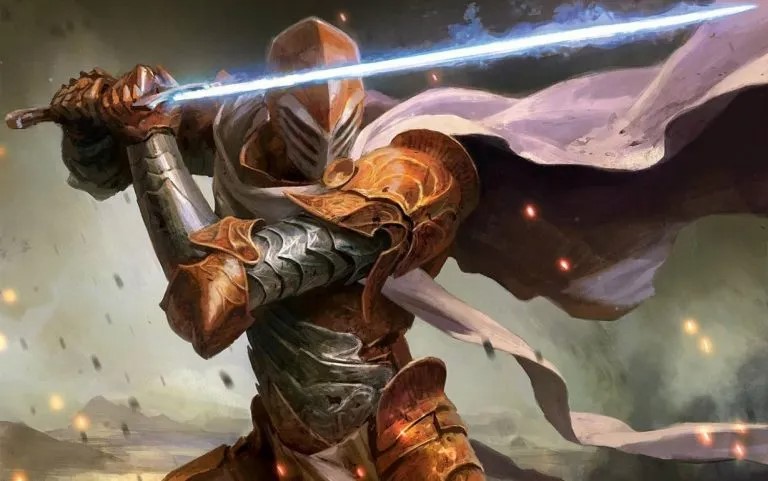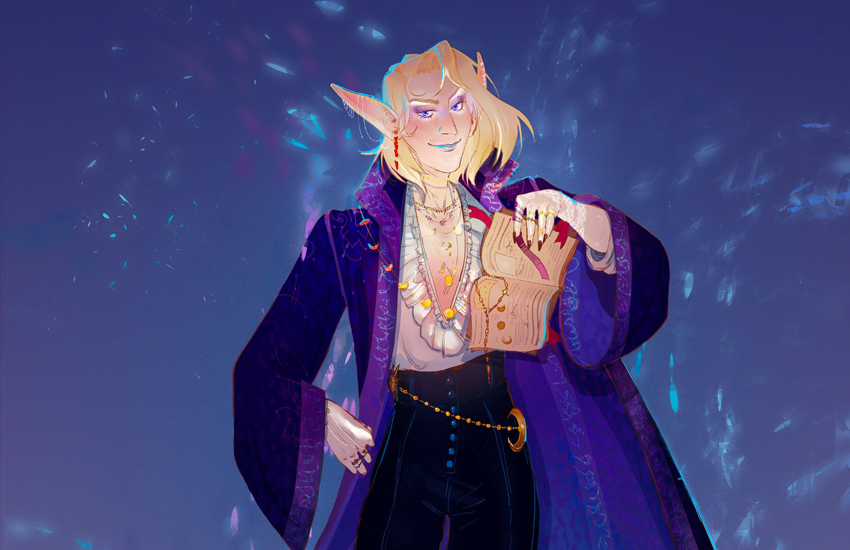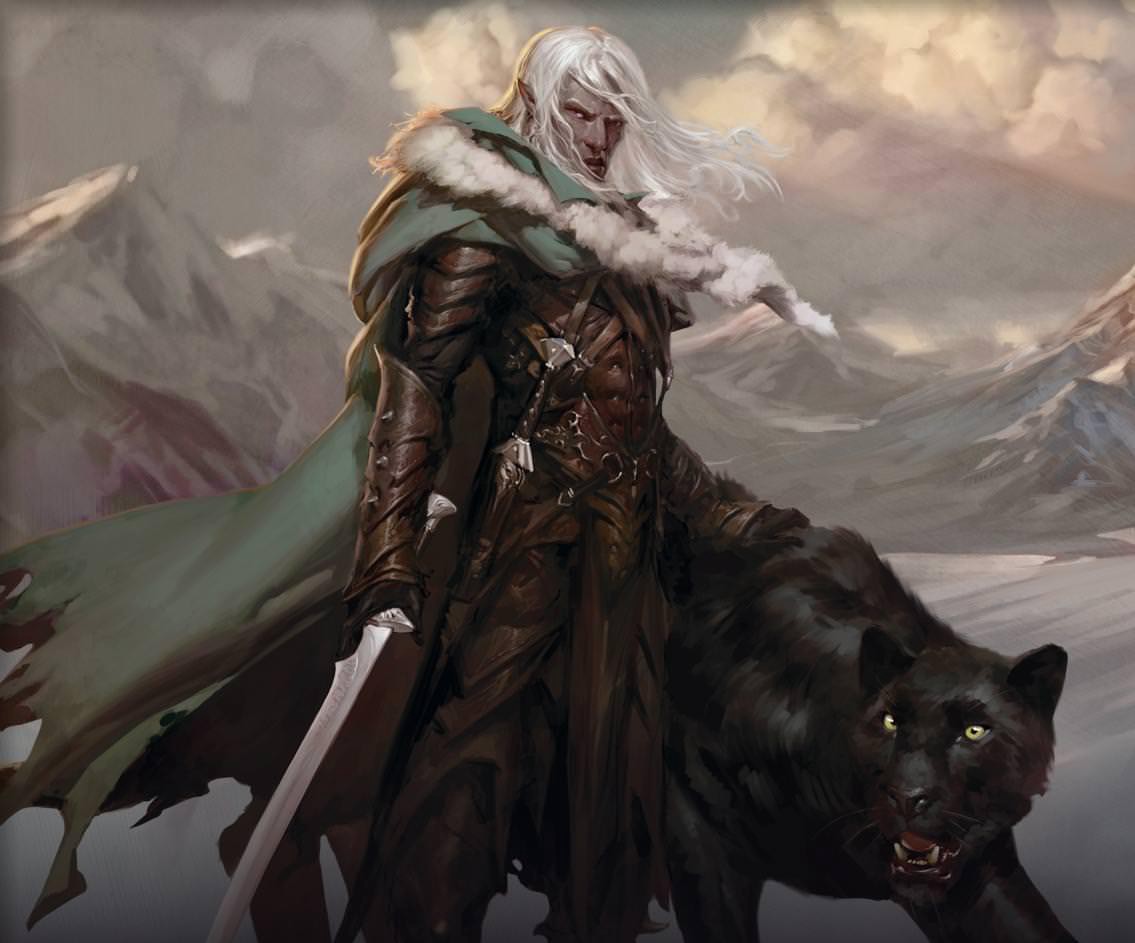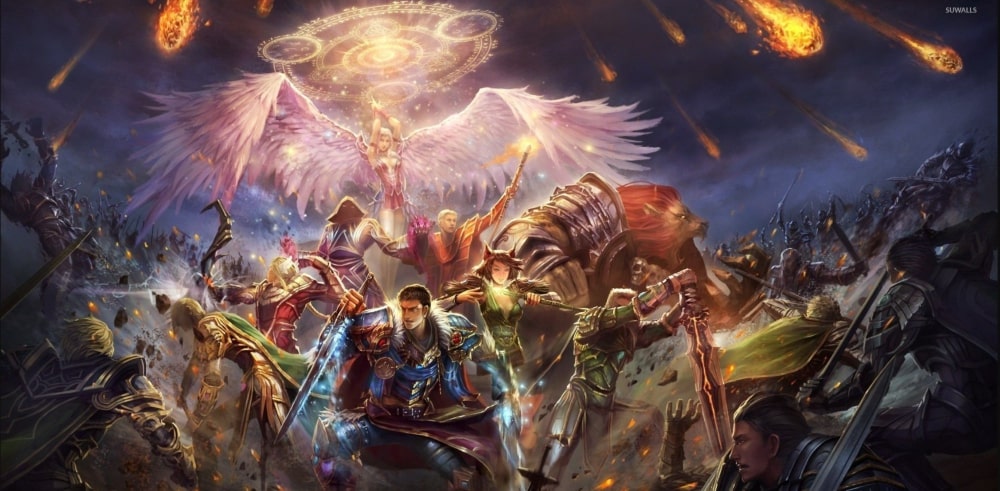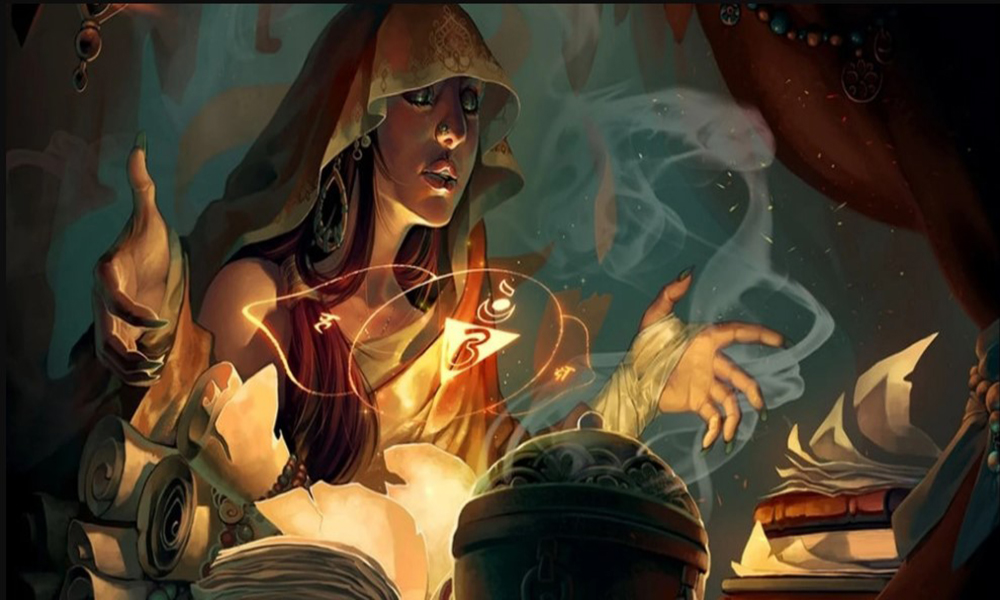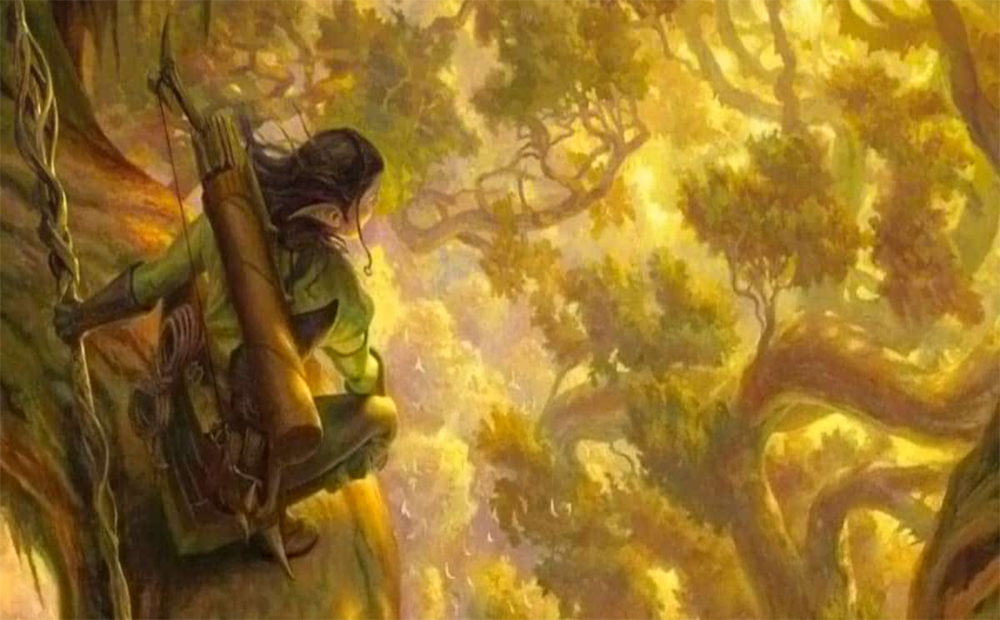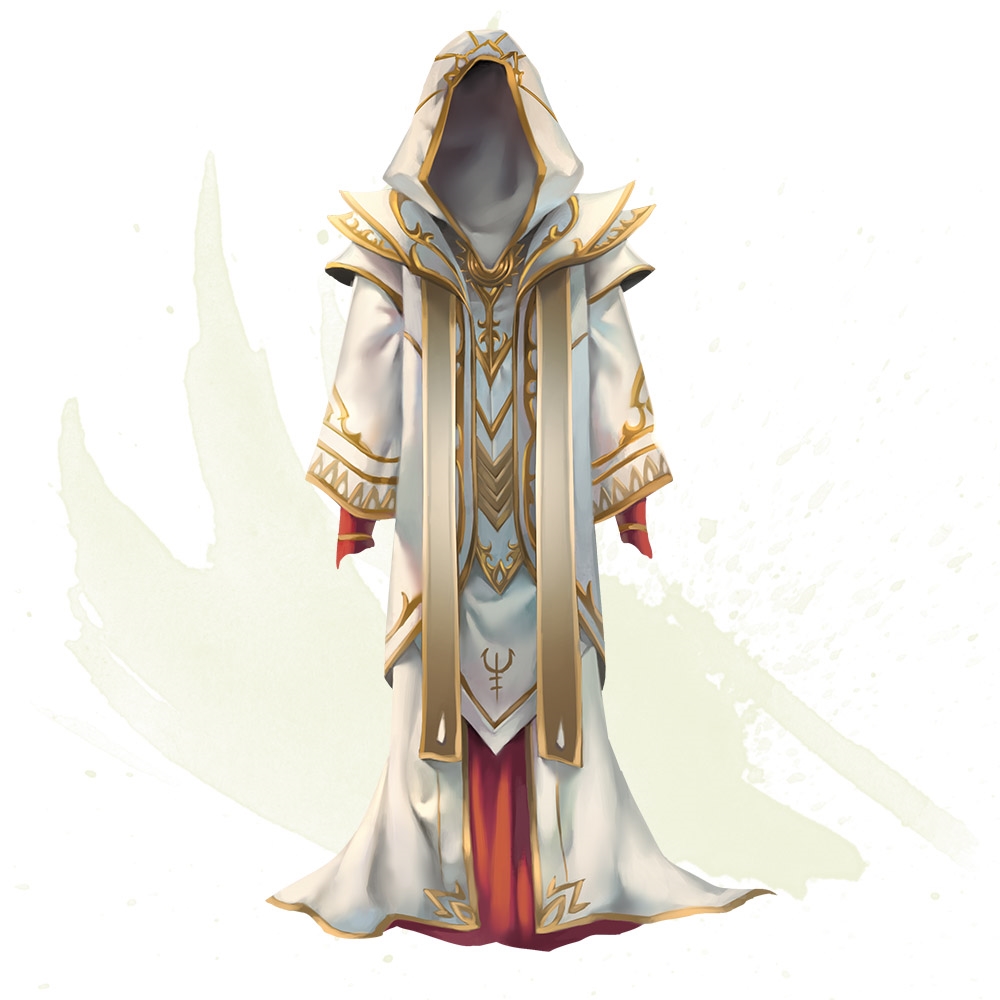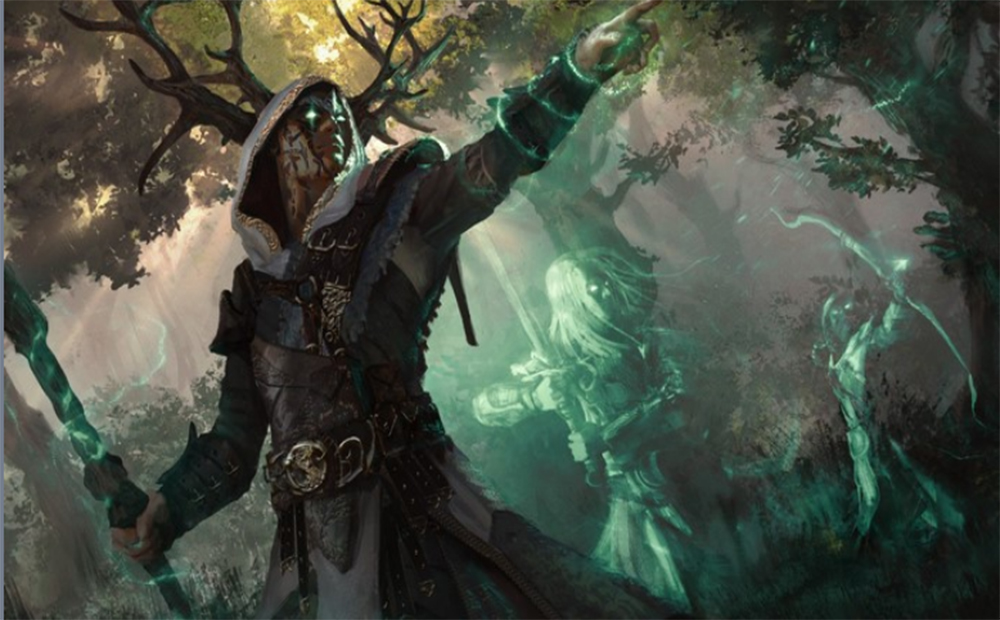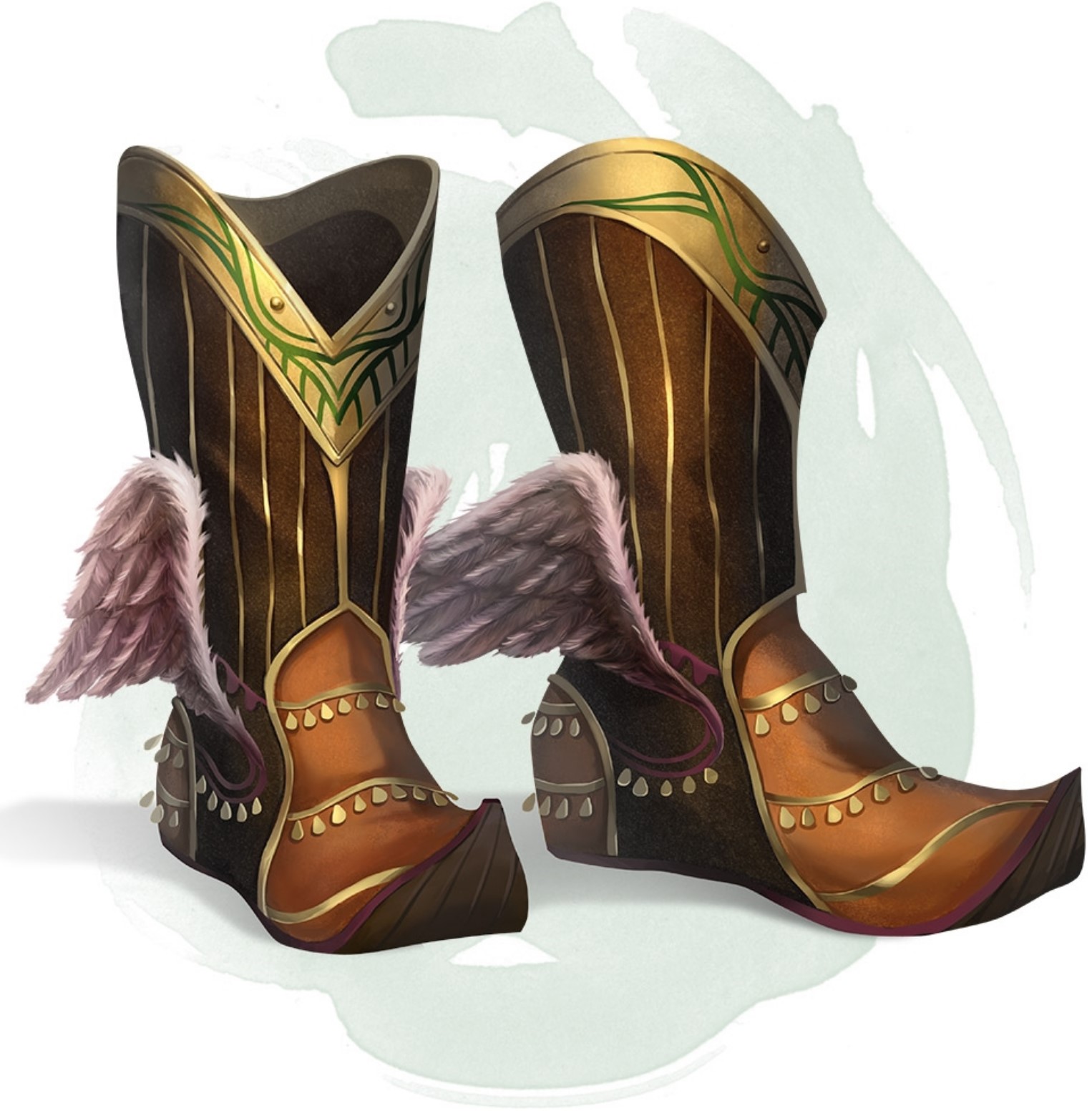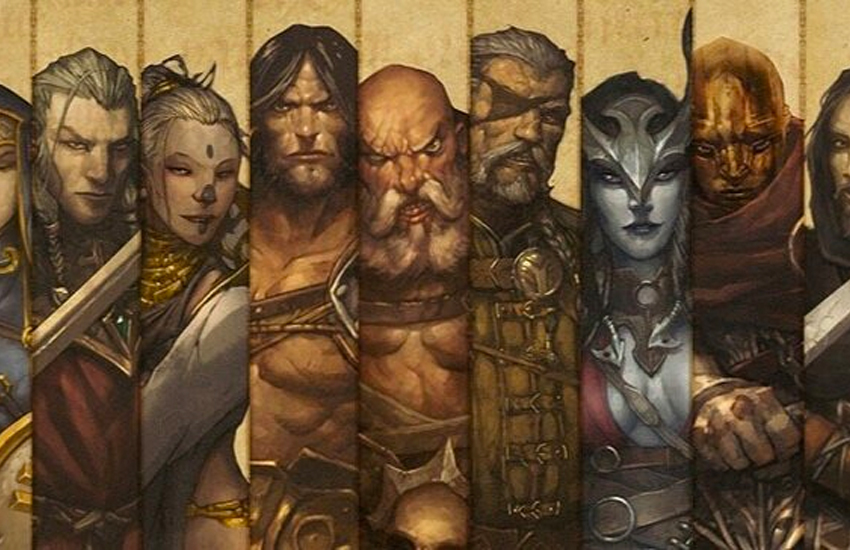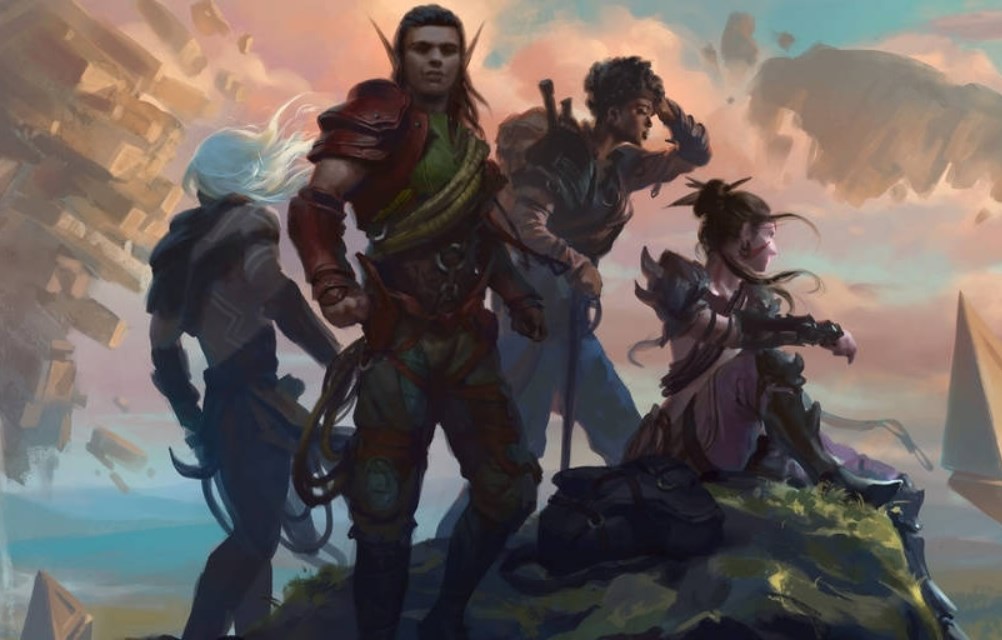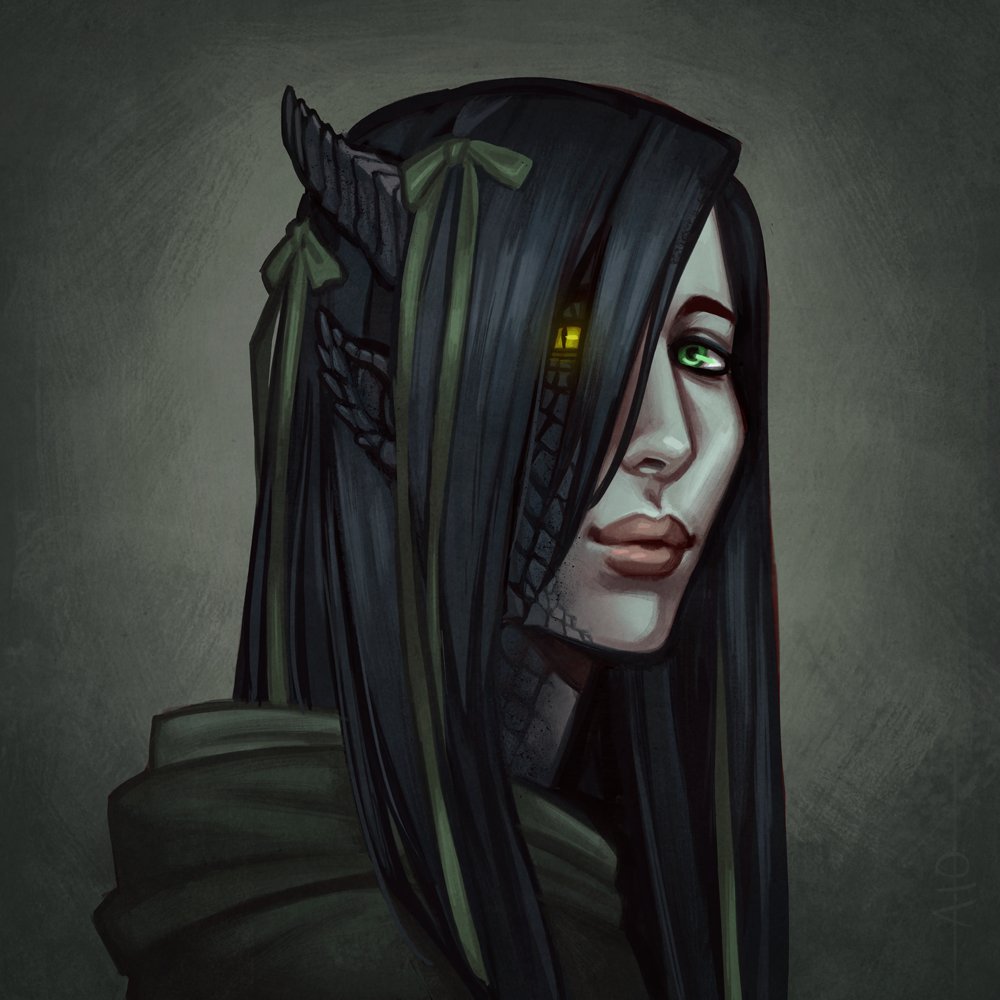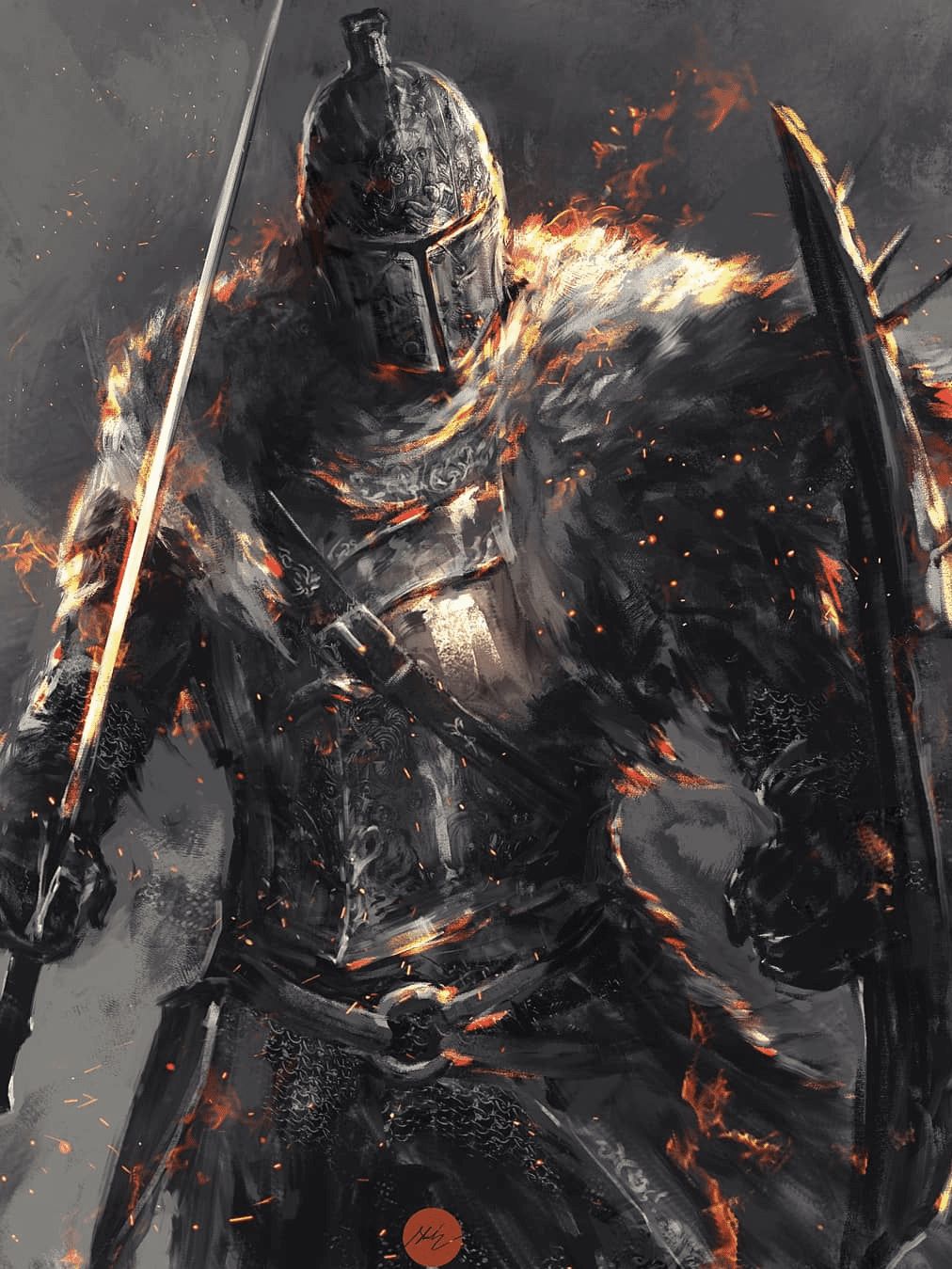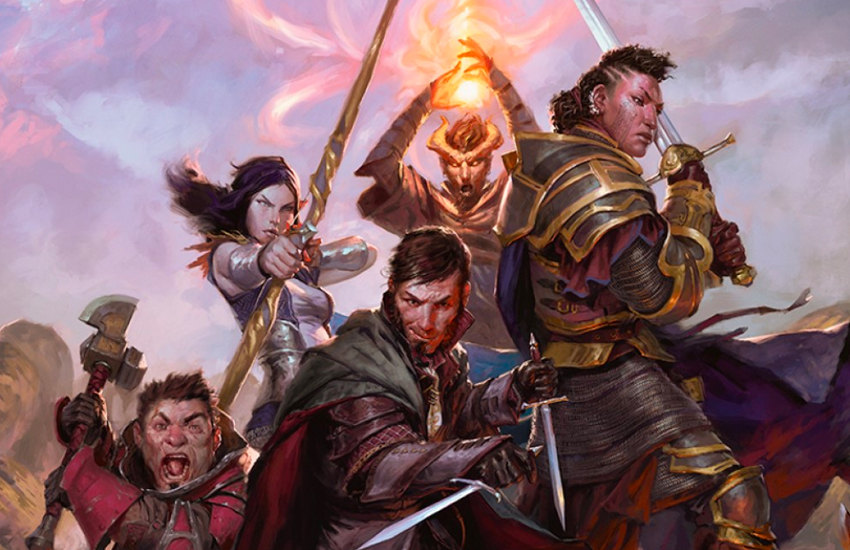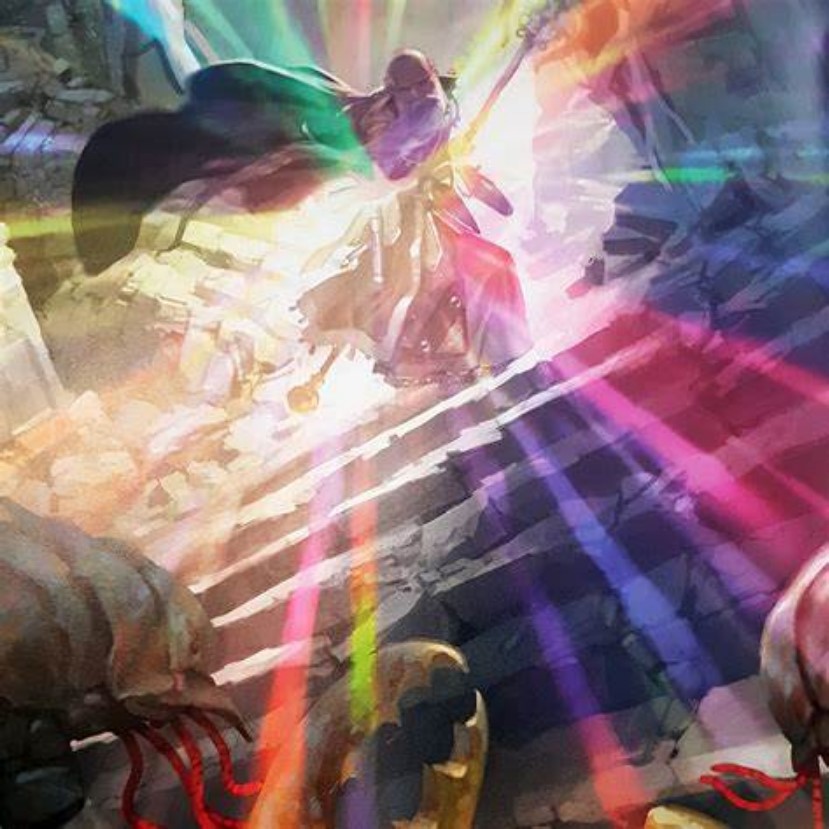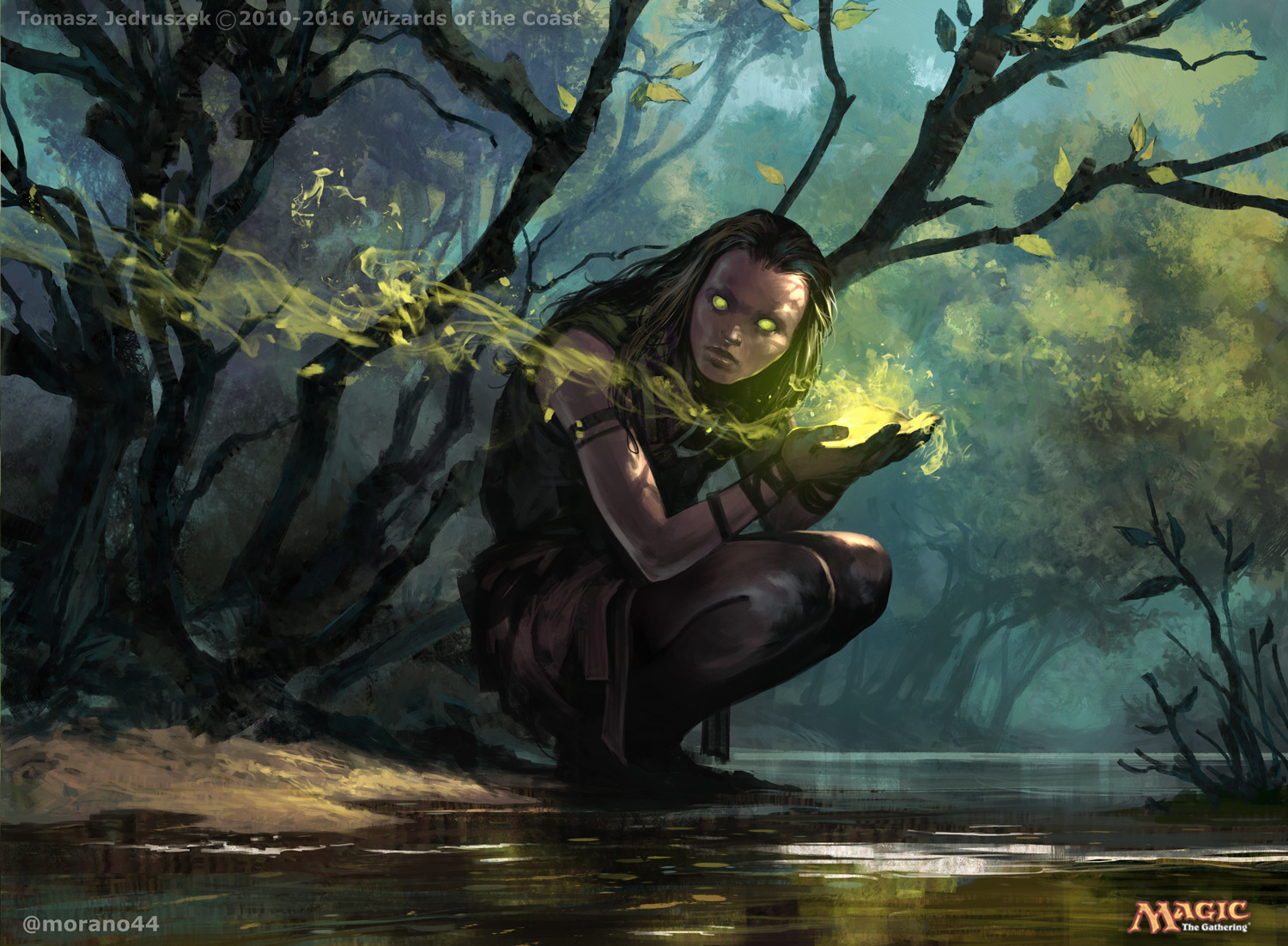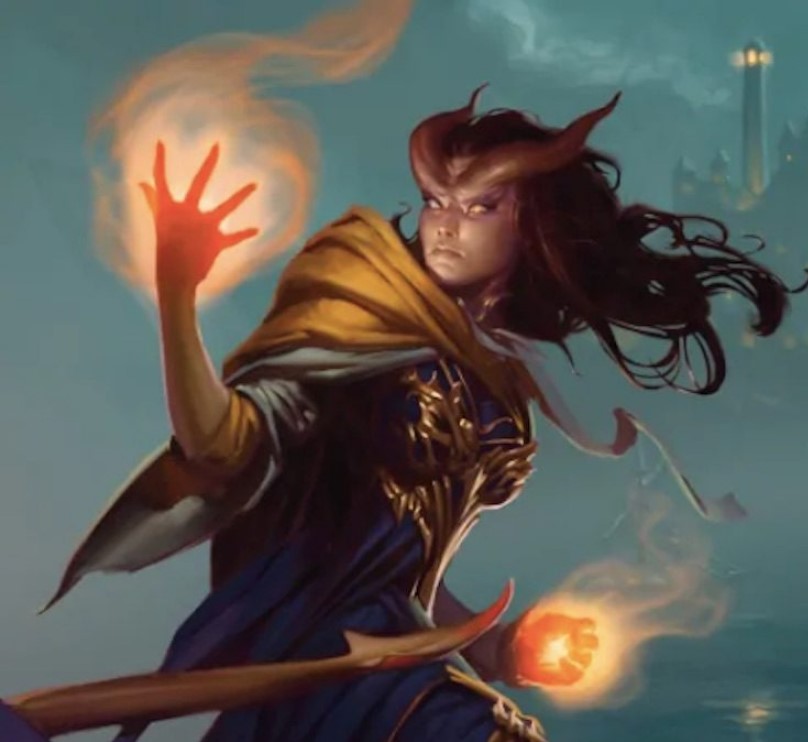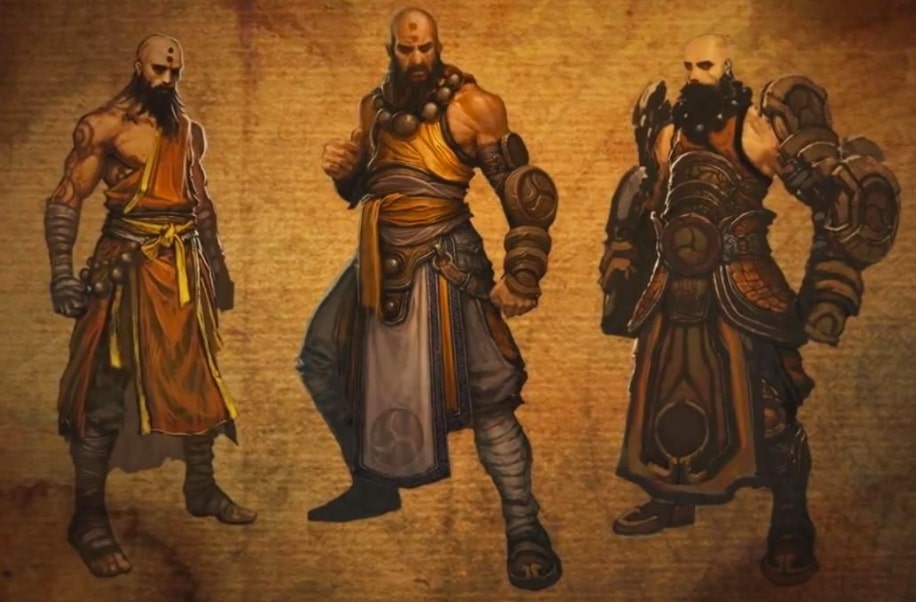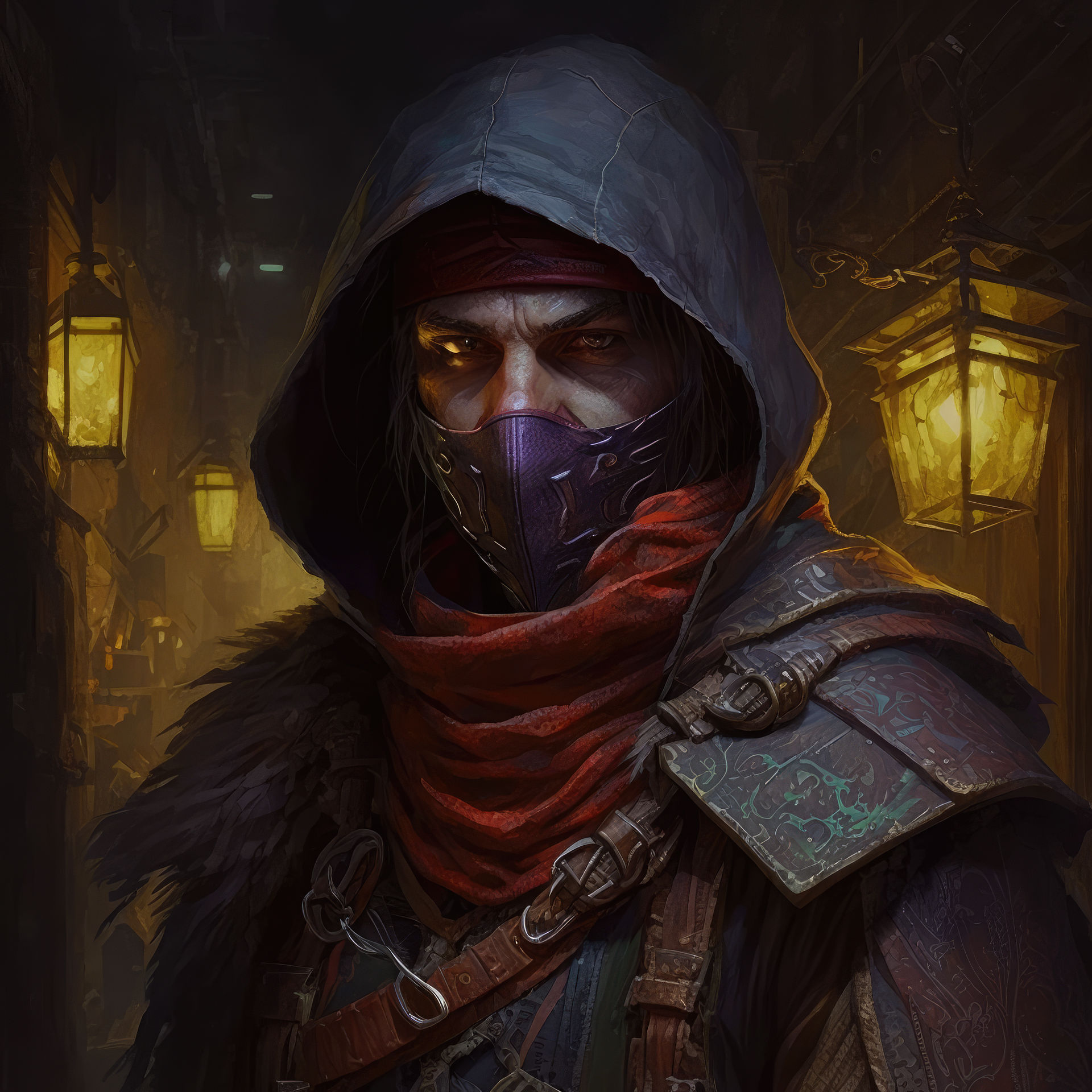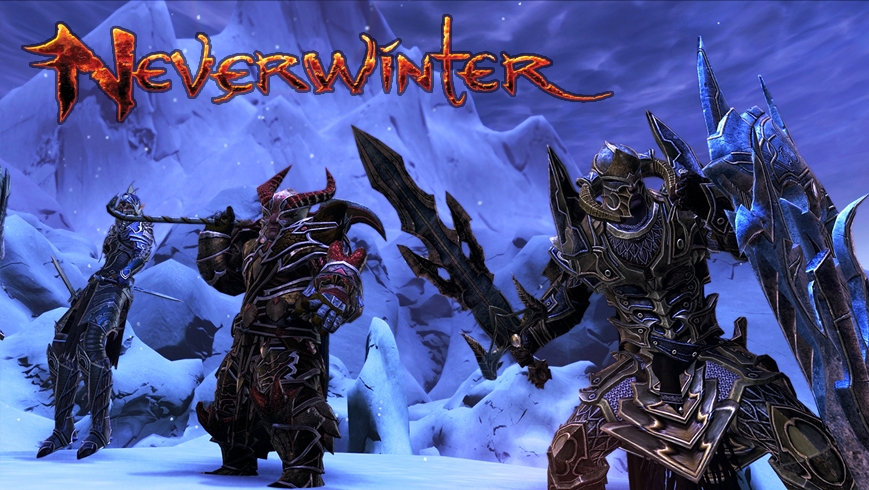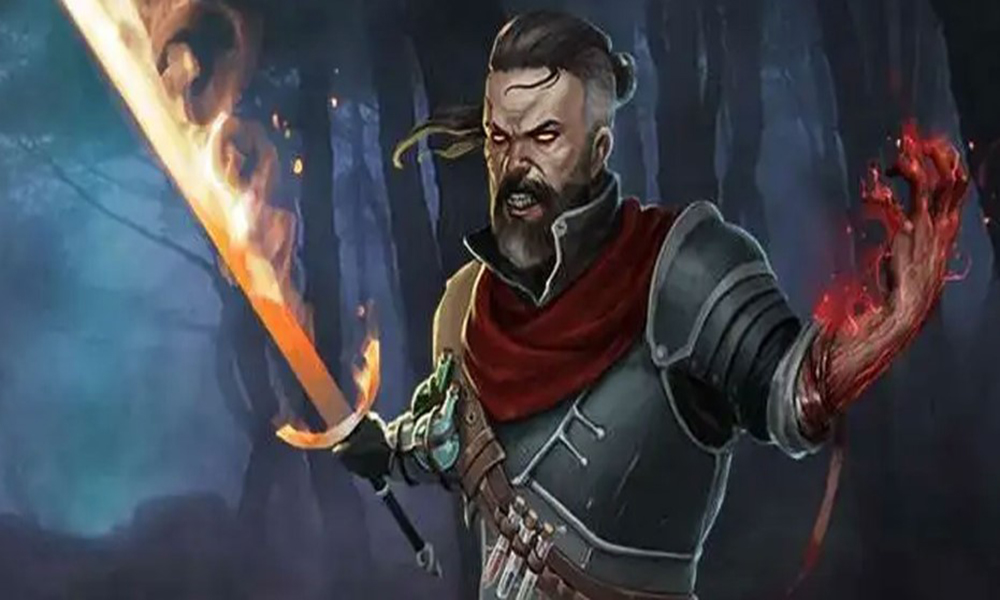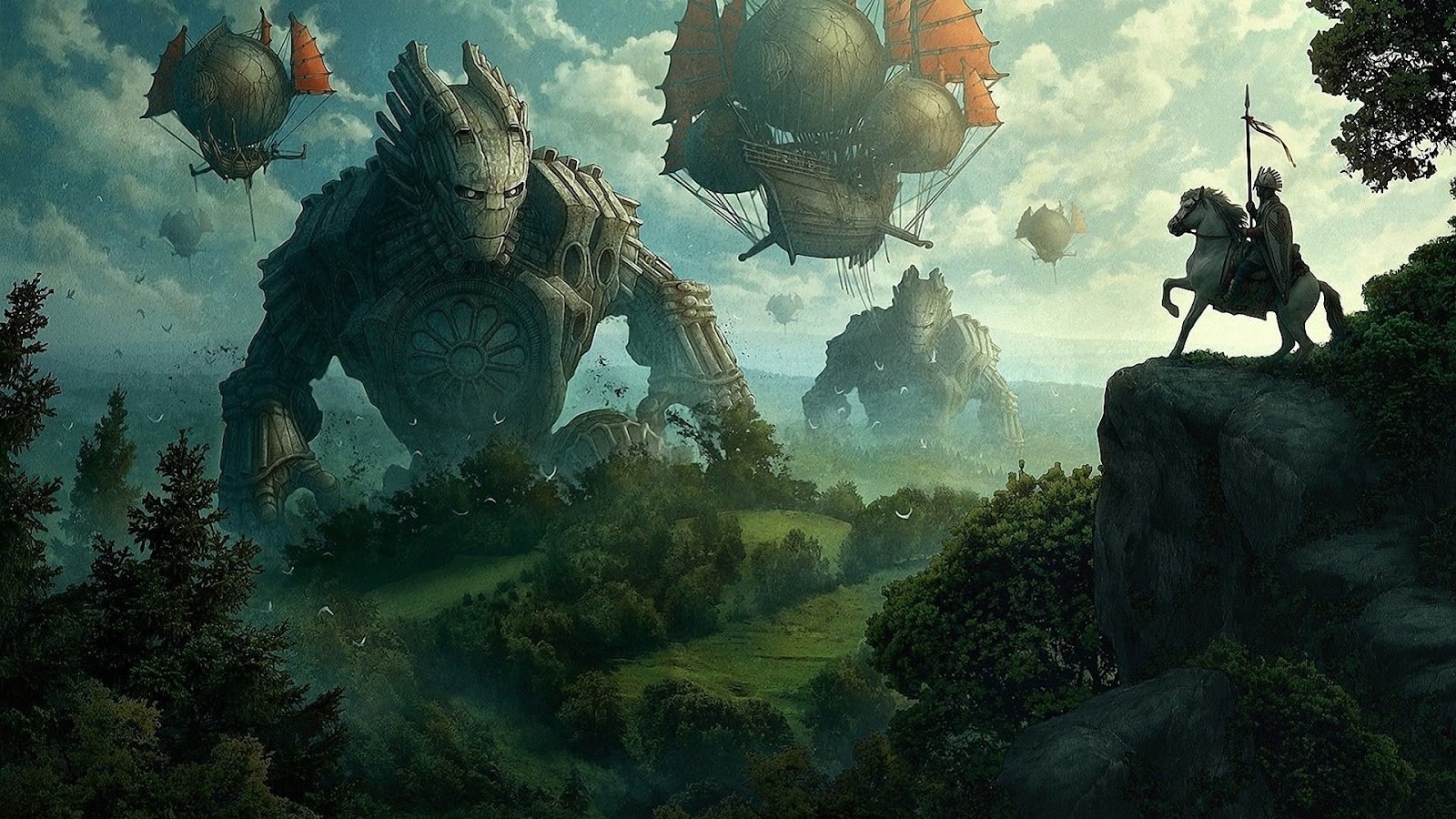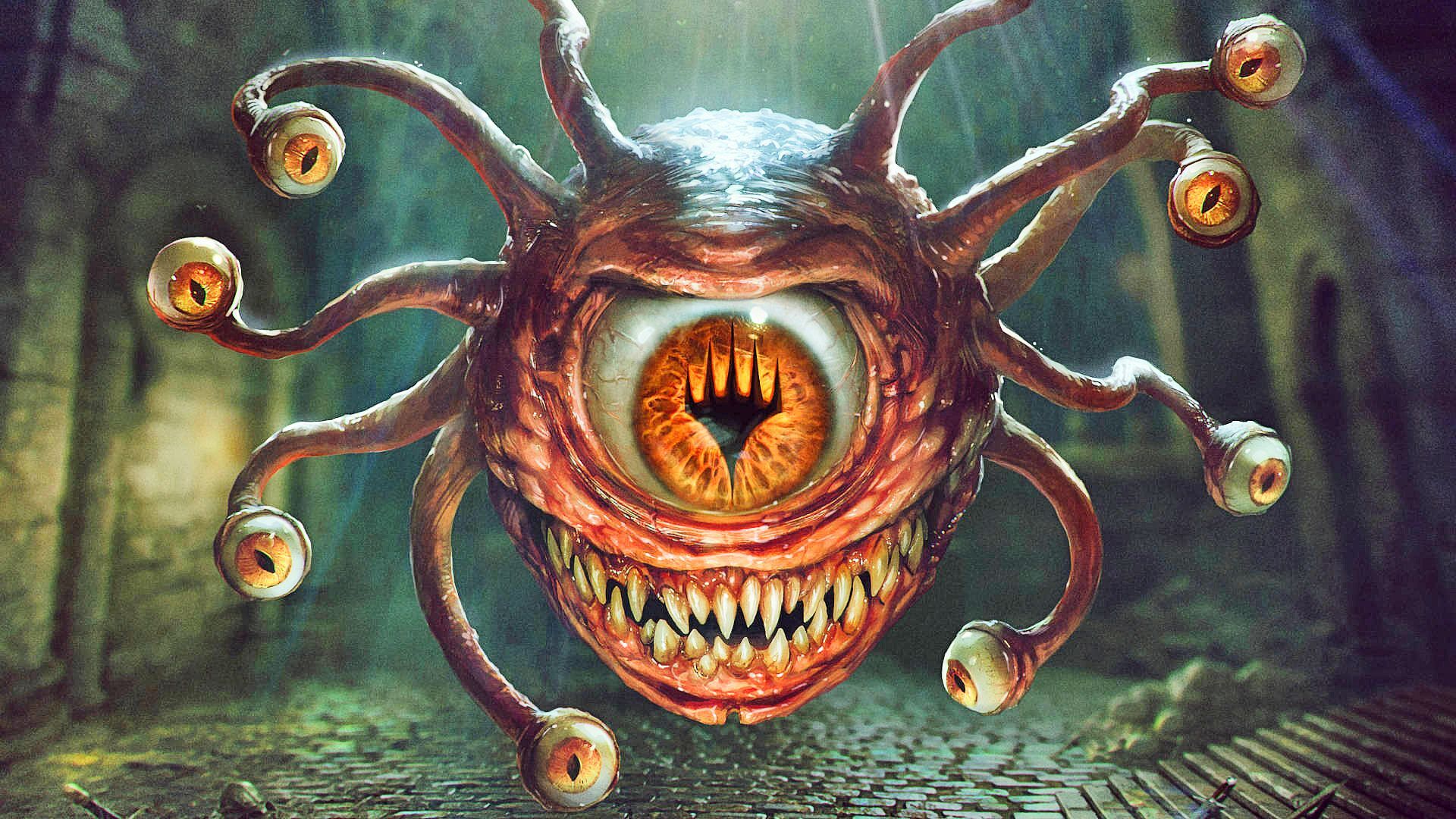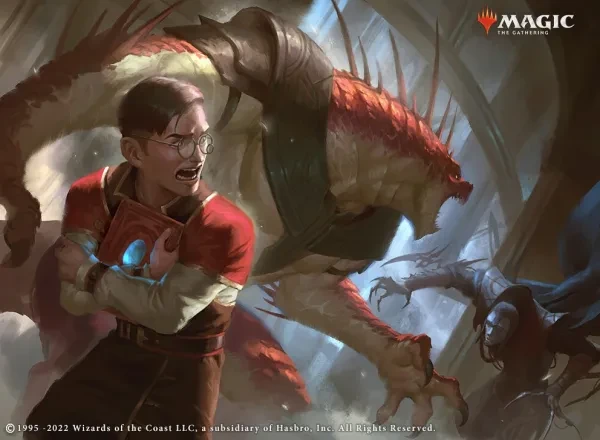
D&D is built around combat. Whether you’re fighting armies of goblins, an evil king, or an ancient dragon, combat is a major component of D&D adventures. Your adventure will be met with resistance, but it is up to you to rise above it and emerge victorious.
As a DM, you’re the one who plans and leads all the monster encounters your party will face. This is much easier said than done. How should you balance combat? How many creatures do you want to group into a single encounter, and with what abilities and features?
Here are my top fifteen best monster encounters to pit against your players, placing them face to face with all the terrifying creatures that go bump in the night.
15. Intelligence and Lack Of
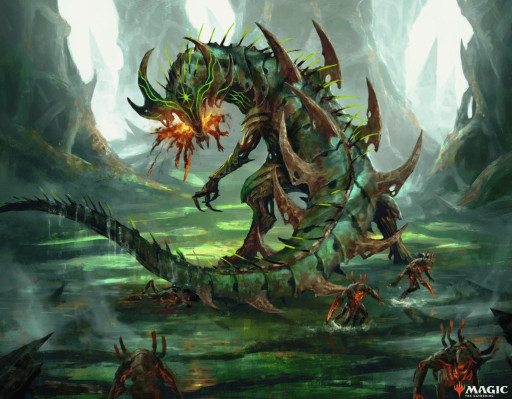
Wizards of the Coast: Tyrranax Rex by Tuan Duong Chu
Creatures lacking intelligence can be just as dangerous as the criminal masterminds. Just because they don’t have elaborate strategies doesn’t mean they’re not a threat. Facing a pack of beasts guarding their young can be just as much of a challenge for your party as a cult of necromancers.
You wandered too far into the deep woods and are now being chased by a pack of feral wolves, whom you just awoke from their afternoon nap. Beasts and wild animals have straightforward motives. Protecting their allies or territory, guarding resources or young, hunting, or fleeing are a few common scenarios. Mix and match these motives to make wilderness encounters more dangerous.
These encounters are fun because the threat is simple to understand. Telegraph these motives to your party for a clear fight or obscure them for more of a challenge. You could also introduce external pressures besides your party, like a natural disaster or competing creatures, to provide additional threats from a singular encounter. These types of encounters challenge the sheer strength and dexterity of your party, typically requiring a straightforward brawl.
Monsters in this encounter:
- Beasts and animals
- Plants, like shambling mounds or treants
- Swarms, like insects, snakes, or birds
14. Grapple and Restrain
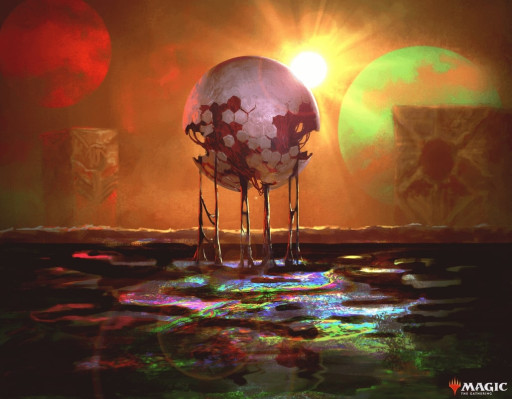
Wizards of the Coast: Glistening Sphere by Tuan Duong Chu
One way to slow down your players is to restrain them, both from movement and taking an action. Grappling reduces your speed to 0, preventing you from fleeing or dodging out of the way of an area of effect. The restrained condition not only reduces speed, but imposes disadvantage to attacking and dodging while giving your enemies advantage against you. Both can be incredibly deadly in a close encounter.
You’ve snuck up on your opponent, ready to strike from behind. But before you do, the chest beside you springs to life! A mimic who was guarding the door bites down with razor sharp teeth, pinning you in place. Many creatures can challenge your players by simply holding them in place and preventing them from moving forward.
Grappling and restraining can turn the tides of a battle. While grappling may not seem to do much, an enemy can separate or severely restrict your party by simply preventing them from moving away. The restrained condition can do even more, making it more difficult to fight while giving your enemies the advantage. Utilizing both will provide both a fun and challenging combat encounter.
Monsters in this encounter:
- Mimics
- Plants
- Oozes or gelatinous cubes
- Strength-based humanoids or guards
13. Dragons and Breath Attacks
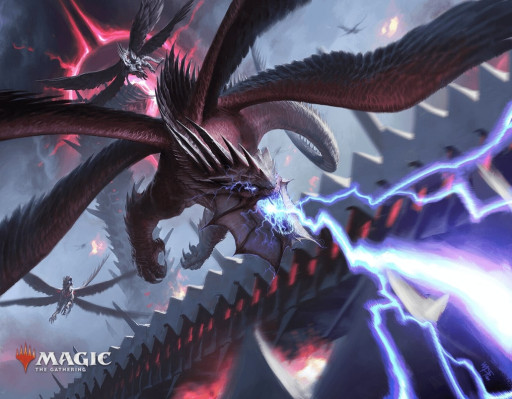
Wizards of the Coast: Defiant Thundermaw by Darren Tan
It’s in the name! Dragons are one of the most iconic monsters in D&D, so much so that the system features them in its title. Dragons themselves are dangerous, but their elemental breath weapons give them an additional edge in a battle encounter.
You’ve just stumbled into a dragon’s lair. Whether it be to steal their horde or to take shelter from the elements, the dragon living there isn’t too pleased to see you. It swoops down with its massive wings to strike with its claws, teeth, and tail. It showers down a cone of acid, fire, cold, or other elements to drive you away.
Dragons are fun to add to your encounter because they’re such powerful symbols in the D&D world. Maybe they embody pure magic, raw power, or the forces of nature. They come in a variety of themes and challenge levels, ranging from wyrmlings to ancient beings. Try out a few and create your own unique creatures!
Monsters in this encounter:
- Chromatic dragons
- Metallic dragons
- Gem dragons
- Dragonborns and adjacent creatures, like kobolds or wyverns
12. Classic Monsters
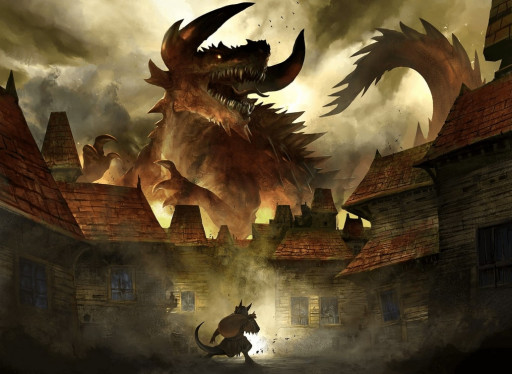
Wizards of the Coast: You Look Upon the Tarrasque by Kekai Kotaki
Dungeons and Dragons is packed full of iconic monsters. Besides dragons, they feature beholders, owlbears, oozes and gelatinous cubes, mimics, and many more. These classic monsters can set the stage for memorable and impressive monster encounters.
You’re deep into the dungeon, searching for loot and monsters. The original builders set up a variety of tricks and traps to slow you down. In addition, several monsters have set up residence in these musty chambers. Oozes slink through the corridors while a beholder scans each room. You’re not alone, but neither are they…
Encountering classic monsters from the core D&D books leads to exciting encounters. While veterans may know about each monster’s abilities, you can create a challenge by creating encounters with multiple types of monsters, or hiding what kind of monster your party is fighting or shifting their abilities (if you allow homebrew). But even if your players do know the details of each monster, the encounter will still be fun because of the unique flair and scenario you provide. It can allow them to think up new and innovative solutions to emerge victorious.
Monsters in this encounter:
- Classic D&D monsters, for example:
- Tarrasques
- Beholders
- Dragons
- Owlbears
- Displacer beasts
- Oozes or gelatinous cubes
- Mimics
- Fae
11. Magic Items
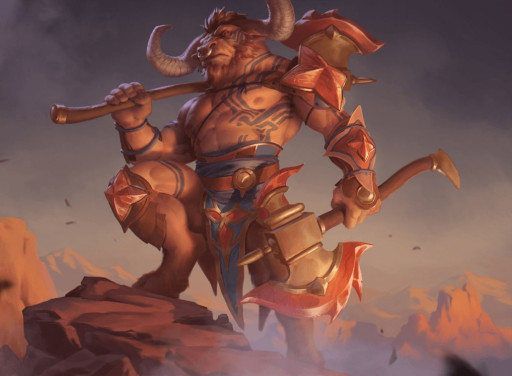
Wizards of the Coast: Sardian Cliffstomper by Joseph Weston
You’re not the only one who can wield magical weapons! Giving your monsters magical weapons can transform seemingly weak enemies into formidable opponents and strong enemies into terrifying threats. Pair magical items with the strengths and weaknesses of your monsters, filling in the gaps in their abilities or buffing their proficiencies.
You are fighting a horde of goblins and have nearly reached their leader. But before you do, the leader reaches down and pulls out an enchanted crossbow. They level it at you and notch an arrow, its tip glowing before bursting into flames. You know when that arrow hits, it will not be pretty…
Magical items can make your enemies more of a threat, providing new abilities and boosts the monsters would not otherwise have. If they are intelligent, they can use these new abilities and spells to trap or outmaneuver the party. Magical items can also give the party an extra reason to defeat them. If you allow looting after encounters, perhaps your party can pick up a dropped enchanted item or even go on a quest to restore it to its true power.
Monsters in this encounter:
- Humanoids, like cultists, berserkers, or even NPCs
- Intelligent creatures who can take advantage of magical items, like mind flayers or dragons
- Shapeshifters
- Any creatures already carrying weapons or items, like goblins or giants
10. Legendary Actions
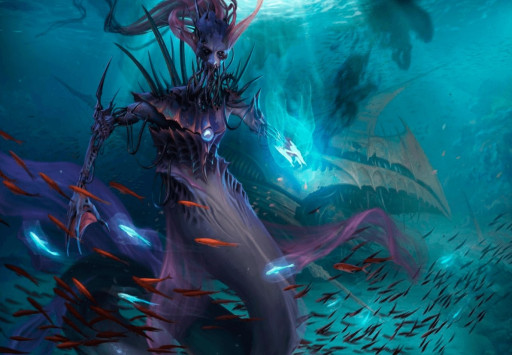
Wizards of the Coast: Vohar, Vodalian Desecrator by Daarken
Legendary actions are special actions only available to legendary creatures. These are powerful abilities that can only be used a few times per encounter, but can be activated at the end of another creature’s turn in addition to regular actions. Some legendary creatures also have lair actions–these are additional abilities they can use when fighting on their home turf. These actions can allow monsters to take advantage of the downtime in between turns, especially if a party member has made themself open to attacks.
It’s a calm, cold night. You’re at sea, hunting the elusive and dangerous kraken who’s been terrorizing a local seaport. Suddenly, the water churns below you and massive tentacles emerge from the icy depths. You fire the cannons, but to no avail. Lightning arcs across the sky and flies down towards your ship, snapping the mast in two.
Legendary actions are excellent ways to show off a big bad’s power. They can catch your party off guard by activating in between turns, forcing your party to be much more careful or risk being caught in a deadly trap. Lair actions provide even more abilities to your baddie, making your adventure even more dangerous if the party ventures into their home. Since they renew at the start of the baddie’s turn, keep throwing these legendary effects at the party or save them for a big impact.
Monsters in this encounter:
- Legendary creatures, for example:
- Dragons
- Krakens
- Liches
- Beholders
9. Pack Tactics
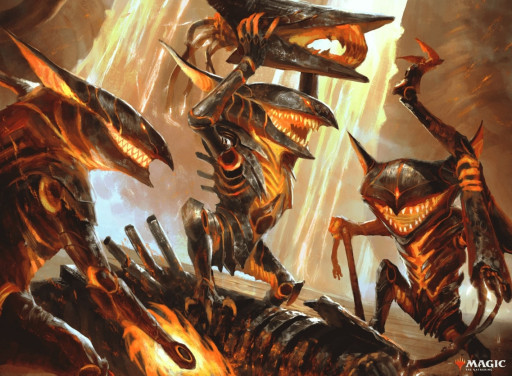
Wizards of the Coast: Gleeful Demolition by Tuan Duong Chu
Pack tactics are special abilities found in creatures with strong, communal bonds. This gives creatures advantage when they are fighting alongside each other, making them more likely to hit and deal damage. In encounters with multiple pack tactic creatures, a party of adventurers can be overwhelmed simply by the collaboration between these opponents.
You’re battling a single kobold. You knock the sling out of its hands and it immediately drops to the ground, cowering. You’re about to deal the final blow when the bushes around you rustle. Three more kobolds jump out of the underbrush. They surround you, daggers drawn. They seem to stand a little taller, preventing you from attacking their fallen friend.
Pack tactics are a common ability to melee beasts and monsters. Whereas they would normally be underpowered against a party of adventurers, pack tactics provide an additional boost to their combat abilities. Pair this feature with strategic placement and you can create a surprisingly challenging encounter for your party.
Monsters in this encounter:
- Pack creatures, for example:
- Kobolds
- Wolves
- Giant rats
- Velociraptors
- Thugs
8. Regeneration
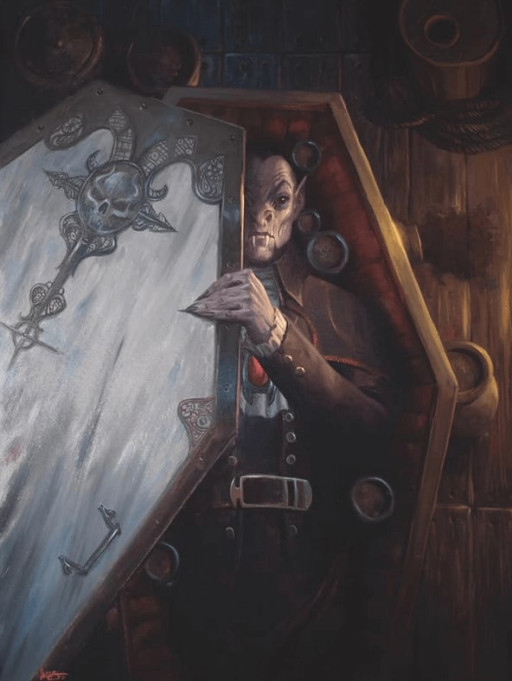
Wizards of the Coast: Casket of Native Earth by Lucas Graciano
Regeneration is fantastic for anyone. When the party can heal, they can stay in the fight longer. The same proves true for their opponents. Monsters with regeneration keeps your party on their toes even if they’re not particularly dangerous encounters, rapidly depleting the party’s resources and spell slots.
Your blade cuts into your opponent, a shady-eyed vampire. But instead of writhing in agony, it simply grins at you. Its body shimmers with red light as the wound you just dealt knits back together. The vampire takes a deep breath, baring its teeth as it lunges forward at you.
Regeneration adds a new twist to combat encounters. In addition to their abilities, regeneration provides another challenge for your party to overcome by allowing creatures to heal. This can transform an average encounter into a marathon of battle, requiring your party members to use valuable resources and spells just to keep up with your opponents.
Monsters in this encounter:
- Vampires
- Slaads
- Trolls
- Magic users, particularly ones with healing spells
7. Waves of Monsters
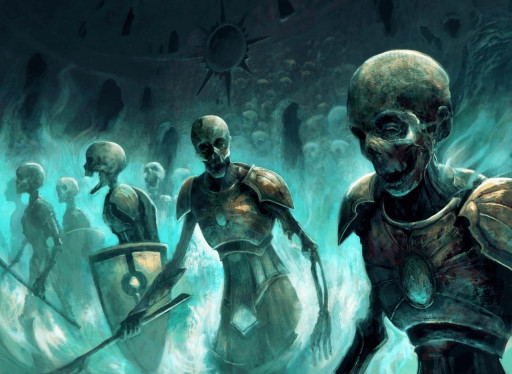
Wizards of the Coast: Immortal Servitude by Seb McKinnon
Even the most prepared parties can be overwhelmed by sheer numbers. Persistent groups of small, pesky creatures can be even more dangerous than a single massive beast. As a DM, implementing waves of monsters can consume your party’s resources and spell slots just like encounters with regenerative monsters.
You’re in a colosseum, fighting endless groups of monsters. As soon as you defeat a pack of tigers, three hippogriffs leap out of the shadows. You’re drained. You can feel the arcane energy inside you sputter and fizzle out. The emperor glances down and lifts their hand…
Waves of monsters can be fun because you can adjust the challenge as you go. If the encounter seems too easy, add more monsters or more challenging ones into the fray. If the encounter seems too difficult, reduce the number of monsters or shift them to ones that are less of a threat. Add levels to the encounter by showcasing a new boss every few waves, forcing your party to change tactics. Encounters with waves of monsters encourage your players to remain vigilant and engaged.
Monsters in this encounter:
- Any!
- Most effective with small, pack monsters, like kobolds or goblins
- Mix and match different monster types and abilities for a variety of combat encounters
6. Terrain and Environment
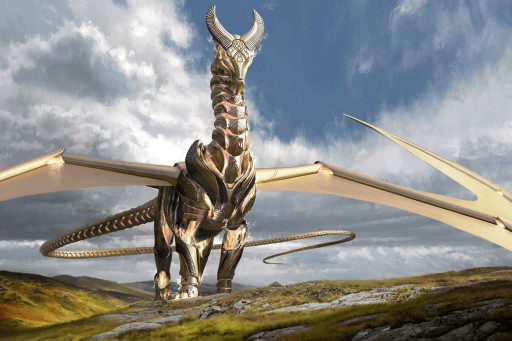
Wizards of the Coast: Ramos, Dragon Engine by Joseph Meehan
If you find your combat encounters growing stale, shifting the terrain and environment can provide new obstacles and threats. Now, instead of rushing head-on into combat, your party will have to climb over steep cliffs, wade through water, or avoid elemental damage before reaching their enemies. Their opponents may be the source of these challenges or may be just as caught off-guard as your heroes.
You’re cornered, back pressed up against a rocky outcropping. You turn to look over the stone wall, firing an arrow before ducking back behind cover. Bolts of arcane energy and enchanted arrows whiz by your shelter. Those arcane archers are really putting up a fight.
Shifting the terrain and environment gives your party ever-changing challenges to keep them engaged. These challenges can be adjusted to the strengths and weaknesses of your party members, requiring them to work together to reach the end goal. If you want to create an especially difficult encounter, your party could even lose resources and supplies due to difficult terrain or environmental threats, like rushing water or landslides. This requires them to tread carefully and avoid unnecessary dangers.
Monsters in this encounter:
- Any!
- Effective with creatures proficient in ranged attacks, like those with AoE (Area of Effect) abilities or ranged weapons
- Effective with creatures who can avoid the effects of difficult terrain, like flying creatures or those native to the environment
5. Spellcasters and Melee Brawlers
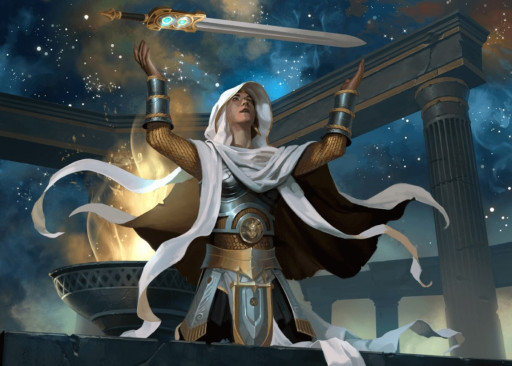
Wizards of the Coast: Gods Willing by Mark Winters
Balancing spellcasters and melee fighters is important for both your party and their opponents. Magic users and melee brawlers each have their own skills and roles within the heroes’ party composition, and this proves true for your enemies as well. Mixing spellcasters and melee fighters will allow you to cover the weaknesses of one creature with the strengths of another.
You are locked in combat with an orc chieftain, your blades crossed. You’ve nearly pushed him back when his blade glows with burning light. You glance behind him to see a mage gently floating off of the ground, their hands alight. The orc chieftain roars and shoves you away.
Spellcasters have a wide variety of abilities and damage types, but they are often more fragile and less equipped for melee combat. Melee brawlers are more hardy and able to deal massive amounts of damage, but their abilities are fairly straightforward and often limited to physical attacks. Setting up encounters with both types of attackers will allow them to bolster the abilities of each other, becoming more dangerous threats to your party.
Monsters in this encounter:
- Spellcasters, for example:
- Sorcerers or mages
- Necromancers
- Fae or fiends
- Melee fighters, for example:
- Barbarians, fighters, or common soldiers/guards
- Beasts
- Anti-magic NPCs or villains
4. Solutions Apart from Combat
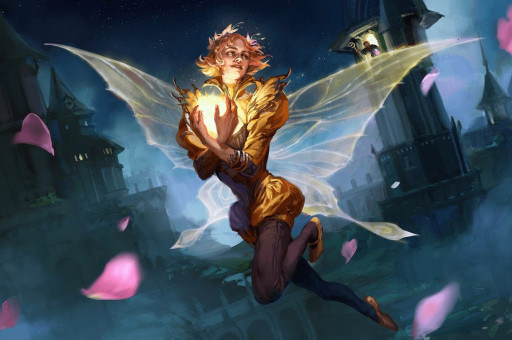
Wizards of the Coast: Ivy, Gleeful Spellthief by Evyn Fong
Not all encounters need to end in combat. Sometimes, the average conversation or manipulation of the environment can defeat your enemies more quickly than a sword. This can be even more challenging and fun than a battle, forcing your players to find creative solutions and use different skills.
You’re face to face with the evil king in his throne room. His soldiers surround you, crossbows trained upon your party and eagle-eyed sorcerers prepared to counterspell any magic you attempt to cast. There’s no fighting your way out of this one, but the king looks at you curiously. “You and your friends have a unique set of skills. Let’s make a deal.”
Non-combat encounters require different solutions than a straightforward fight. You may need to persuade or intimidate your opponents to move past them. Perhaps you can drop the chandelier in the middle of the ballroom, causing a distraction so you can sneak past. These are all encounters that encourage your players to think outside the box and find new solutions to their obstacles.
Monsters in this encounter:
- Any!
- Intelligent creatures, like humanoids, dragons, or eldritch monsters
- Unintelligent creatures, like humanoids, beasts, or undead
3. Strategy and Objectives
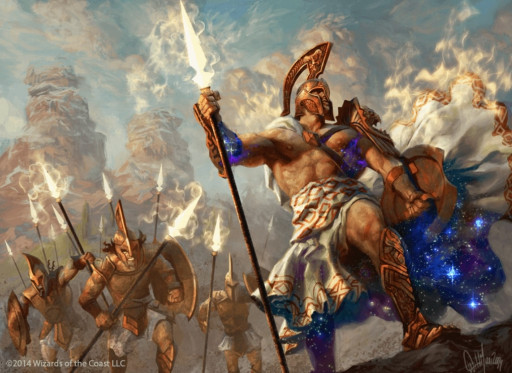
Wizards of the Coast: Archetype of Courage by Willian Murai
Just like your party is on a quest to save the world, your enemies have quests of their own. They may think they’re the ones saving the world, or they may just want to devolve the world into chaos. Giving the party’s enemies objectives and a strategy will not only make them more challenging, but also flesh out their characters and draw your players into the story.
You’ve set up the perfect trap for the bandit leader. You and your allies lie in wait beside a forest path, preparing your weapons. All of a sudden, you feel a cold blade pressing against the small of your back. “Think you could outwit us, did you? Think again.”
Strategies and objectives can work both for and against your players. If your enemy learns your plans, they can counter them and vice versa. If you pit your players against an intelligent foe, you can come up with new tricks and traps to slow the party down. But if your party out-thinks their villain, reward them! Give your players a challenging enemy, both physically and strategically, and the tools to overcome their opponent.
Monsters in this encounter:
- Intelligent, strategic creatures, like mind flayers, cult leaders, or other humanoids
- Creatures who are working towards a larger goal, like minions or allies of the villain
2. Multiple Small vs One Large Creature
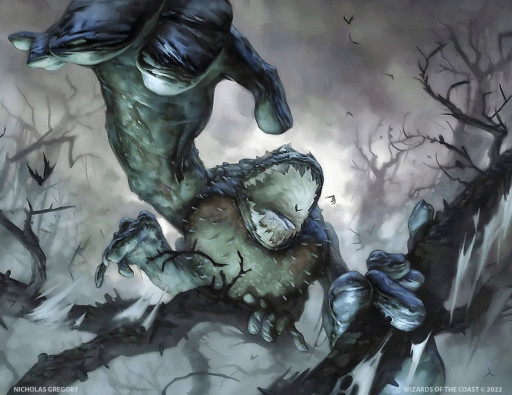
Wizards of the Coast: Uurg, Spawn of Turg by Nicholas Gregory
While it may seem that the most dangerous encounters would feature one, gigantic monster, the opposite is true! Instead of a single legendary creature, the most dangerous encounters overwhelm the party with multiple, smaller creatures. These creatures divide the party’s focus, forcing them to switch from one opponent to the next.
You’re face to face with a deadly green gelatinous cube. But before you can attack, the cube shakes and distorts. It splits in half, then in half again. Before long, the chamber is filled with miniature gelatinous cubes! They rush at you with incredible speed, blocking the way to the exit and your allies.
Adding multiple monsters gives the DM more to manage, but it can transform an average encounter into a fun challenge for everyone playing. Perhaps one monster shifts into or calls upon other creatures. Or maybe the rest of a pack shows up to surround the party. Pair this strategy with other features like pack tactics and regeneration to increase the challenge even further.
Monsters in this encounter:
- Small to medium creatures, like imps, snakes, or bandits
- Animated items, like magical swords, bows, or traps
- Monsters that divide into/call upon more creatures, like gelatinous cubes, plants, or druids
1. Suit to the Environment/Scenario
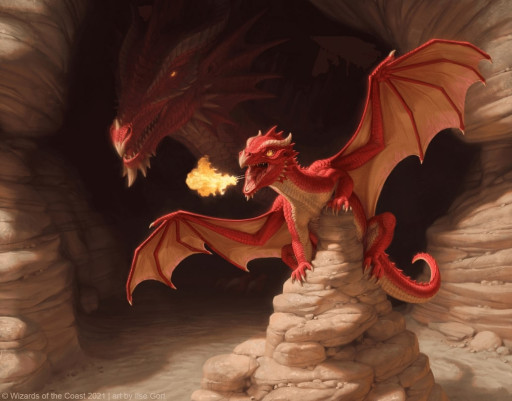
Wizards of the Coast: Fearsome Whelp by Ilse Gort
D&D is full of thematic connections, and monster encounters are no exception. Each time you travel into a new biome or environment, the monsters and creatures found inside will change. Shift to a new location or landscape to mix up your monster encounters and provide your party with a brand new challenge.
You’re trekking through the frozen tundra. As you climb up an outcropping of rock, you see them: a cluster of ice trolls. They appear to be fighting over a clump of ferns, perhaps a food source. You slowly back away, but your foot loosens a chunk of rock and it bounces down the slope. The trolls snap to face you and roar.
There is so much variety to D&D monsters. Whether you want to stay in one location or travel across the realms, there are plenty of encounters for you to create. Perhaps even mix monsters and creatures from outside your location, creating a mystery or imbalance for the party to investigate.
Monsters in this encounter:
- Suit to the environment! For example:
- Forest: owlbears or wolves
- Tundra: ice trolls or redcaps
- Desert: sandworms or giant spiders
- Alternate planes: celestials or fae

